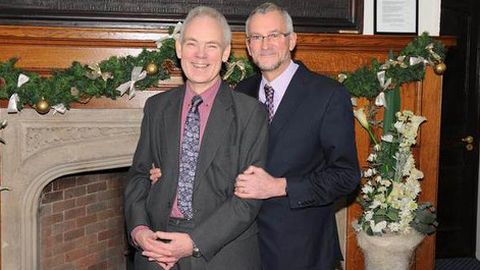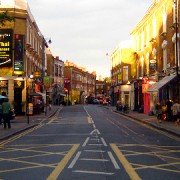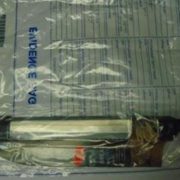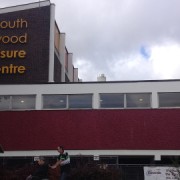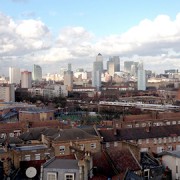The number of local gay bars and pubs in east London is significantly decreasing. Many beloved establishments have been lost and those that remain have had to adapt. ELL has mapped the decline of LGBTQ venues in our boroughs over the past 30 years from 1985 to 2015. Follow the story this week to find out why this is happening and what it means for the lesbian, gay, bisexual, transgender and queer community.
Once there were multiple gay pubs in each of the ELL boroughs of Lewisham, Hackney, Tower Hamlets and Croydon. Today only four remain. Lewisham and Croydon have none. A cultural landmark, the gay bar, is disappearing before our eyes.
Even Soho, the colourful hub of London’s gay scene, has seen queer venues being closed and replaced with luxury flats. Candy Soho, Manbar and Madame Jojo’s have all gone. In Vauxhall, the club Area has been closed and the Royal Vauxhall Tavern, south London’s oldest queer and cabaret venue, was sold to new owners last year. Its future remains uncertain.
The Oak Bar in Stoke Newington was shut down in 2013 and The Joiner’s Arms in Tower Hamlets is currently closed pending a fight to keep it open. Activists have managed to reinstate the bar’s status as a community asset and will continue to struggle to reopen it.
The four remaining venues operating as gay bars in the ELL boroughs are The White Swan, The Old Ship and The Backstreet in Tower Hamlets, and Dalston Superstore in Hackney.
Entertainment and social venues for LBGTQ people have held great importance for the community, providing safe spaces and the possibility of acceptance. To some, the closure of gay pubs, bars and clubs means a loss to the queer community’s sense of togetherness and safety.
Young people in east London who come out as queer today have fewer options of where to go to meet others with shared experiences and have assurance they will be accepted than at anytime in the past three decades.
Croydon activist, Ross Burgess, has campaigned for LGBTQ equality over the past 50 years. He told ELL about how coming out today is a different experience to when he was with his first partner, before homosexual sex was legalised in 1967: “We could have in theory gone to jail.”
“It was very different then but on the other hand there was a gay community. What’s happened more recently is that groups like CAGS [Croydon Area Gay Society] don’t seem to attract younger people and there aren’t the gay venues anymore. Obviously if you go up to London, to Soho and Vauxhall and so on there are gay pubs and clubs.”
“But for instance, at one time there was about seven gay venues in Croydon. They’ve just about all gone now. Some of them still say that they’re ‘gay friendly’ but there’s nowhere anymore in Croydon where you can go in the evening and almost all of the other people there would be gay which is what used to be the case.”
“Partly that’s because young people don’t feel the need to segregate themselves as gay people from the rest of the community,” he explained, “but if some people are feeling a bit hesitant and not sure about being gay it’s probably more difficult for them to find a community that they can join in with like-minded people.”
ELL has gone to the remaining LGBTQ venues in our boroughs to discover what is causing the pub decline. The smoking ban, online dating and dating apps, and drugs have all been noted as contributing factors. A greater acceptance of gay people in the general community has meant that LGBTQ-specific venues are less needed, with positive and negative results.
Gentrification and the general decline in pubs are also strong factors behind this trend but certain venues are adapting and thriving such as the popular bar, Dalston Superstore in Hackney and The Backstreet, Tower Hamlets’ gay leather bar, which is celebrating 30 years in business. Guy Irwin, owner of The Hoist in Vauxhall, told The Londonist: “London evolves — the scene changes — and property prices change areas… Clubs based on poor business models have failed.”
The capital’s increased diversity is leading to greater acceptance of minority groups overall. Despite this, homophobia is still a problem and reports of hate crimes against LGBTQ people are increasing. According to figures from the Mayor of London’s policing and crime office, in June 2014,175 homophobic hate offences were reported across London, the highest volume recorded in the last three years. Since March 2014 the monthly volume has been over 100 offences, an increase of 21.5 per cent on last year. Hate crime against transgender people has risen from 58 to 108 cases, an increase of 86.2 per cent.
Police and LGBT community groups view the rise in reported cases positively as they agree that it is due to more victims coming forward rather than an increase in crime. But they also highlight that these types of crimes are still hugely under-reported. In response to the Mayor’s hate crime reduction strategy for London, the Met ensured that a designated LGBT liaison officer was appointed in every London borough.
ELL has spoken with local people, activists and owners of queer pubs in each of our boroughs to find out how homophobia may affect their lives. Follow the story as we focus on Lewisham, Hackney, Tower Hamlets and Croydon this week.
For more information on how the data behind this article was collected, see our methodology.

